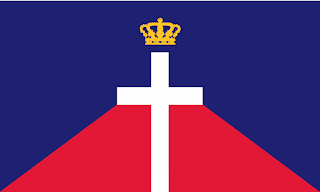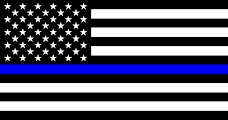Wednesday, November 06, 2019
The Bavarian Soviet Republic
the late Robert Fitch's 2006 Solidarity for Sale: How Corruption Destroyed the Labor Movement and Undermined America's Promise. Following Fitch's lead, a reviewer for The Nation aptly compared the book to Martin Luther's Ninety-Five Theses.
Unfortunately, Fitch's constructive criticism of American unions was not generally well-received. It was mostly ignored.
However, the impetus for this post was not Solidarity for Sale but, rather, a bit in a fascinating 2006 book review by Fitch of separate works by Michael Lerner and Jim Wallis. I won't comment on those books or Fitch's review except to say I am on the same side of the fence as Fitch (but for somewhat different reasons) and he was out of his hermeneutical depth.
What I want to focus on here is his striking reference to the 1919 Bavarian Soviet Republic. In "Vetting God's Politics" Fitch writes:
Lerner's account of the Nazi rise to power leaves out some critical material and political factors — like the Great Depression and the suicidal division of the Left between Social Democrats and Communists. But even more significantly, Lerner blots out the not inconsiderable role of the communitarian Jewish Left in producing the convulsive reaction that Hitler exploited.In speaking this not-so-speakable (see note below) history Fitch exhibits the kind of intellectual integrity that helped unfairly doom him to a relative obscurity in academic and activist circles. There's a reason why Lerner's account left this information out and it is directly related to why Lerner's star rose much higher than Fitch's in elite circles.
At a certain point in the upheaval that followed the German defeat by the Allies, members of [Martin] Buber's Neue Gemeinschaft group — like Gustav Landauer and Erich Mühsam — were high-level participants in the regime which seized power in Bavaria. To understand the terrible repercussion of the 1919 anarchist coup, imagine if Vietnam not only won the war but invaded the U.S. in the 60s and, in the chaos that followed, a handful of long-bearded Jewish radicals from Berkeley seized power in California and declared the state a Republic. Then, although a tiny anarchist minority of a left revolutionary minority, the government proceeded to decree a new social order; handing out a worthless currency as free money; establishing agrarian communes; and declaring war on Mexico. (Bavaria declared war on Switzerland after its refusal to lend the new government 60 locomotives.) It's likely that California would have experienced a reaction far worse than the election of Ronald Reagan.
That said, Fitch's characterization of the Bavarian Soviet Republic (BSR) as an "anarchist coup" is a bit puzzling. Apparently, some of the leading figures in the BSR, such as Landauer and Mühsam were self-described anarchists. However, the seizure of state power in a coup is inimical to anarchism as I understand it.
Moreover, in The Fatal Embrace: Jews and the State (UChicago Pr., 1993) Benjamin Ginsberg more aptly writes:
Jews were also among the leaders of the Communist government that the KPD briefly established in Bavaria after the murder of Kurt Eisner. Eugene Levine was head of the short-lived Bavarian Soviet Republic, Gustav Landauer was its commissar for propaganda and cultural affairs, and Ernst Toller commanded its "red army."Kurt Eisner and Ernst Toller were members of the Independent Social Democratic Party of Germany (USPD). Founded in 1917, the USPD joined the Communist International in 1920, leading to a split with the majority of party members going into the KPD. (The USPD is not to be confused with the Majority Social Democratic Party of Germany (MSPD) but often referred to simply as the Social Democratic Party of Germany (SPD). The USPD was the result of a split within the SPD/MSPD, a self-proclaimed Marxist party. Many founders of the Spartacist League-KPD, such as the Jewish revolutionary Rosa Luxemburg, also started out in the SPD.)
This is a complicated period in Bavarian history. As best I can tell, the sequence of events is as follows:
November 8, 1918: Eisner (a USPD communist) proclaims the People's State of Bavaria (Volksstaat Bayern; VSB) in Munich. Johannes Hoffmann, a Social Democrat (MSPD) and not a Jew, becomes the VSB's minister of education or culture (sources vary). Some sources say Landauer and Mühsam had formal positions in Eisner's government, most say their positions were supportive but informal.
November 21: 29-year-old Adolph Hitler arrives at an army garrison in Munich after being discharged from the hospital where he was recovering from war injuries. The following month he is transferred to Traunstein (about 100 km/62 mi from Munich) only to return to Munich in January or February (In Mein Kampf Hitler says it was March).
January 5, 1919: A general strike, led by the Spartacist League (renamed as/absorbed into the KPD in the preceding month) and the Independent Socialists, begins in Berlin. It will last about one week and in the ensuing violence 150 - 200 people will die before it is violently suppressed by Freikorps.
January 12: In parliamentary elections Eisner's party, the USPD, gets only 2.5% of the vote, entitling them to 3 seats. By contrast, the MSPD wins 31 seats.
February 21: Eisner is assassinated by a 22-year-old army officer, Count Arco-Valley (described as "a young Jew" by British historian Nicholas Goodrick-Clarke in his book, The Occult Roots of Nazism). Some sources claim Hitler is photographed in uniform at Eisner's funeral five days later. The VSB falls into disarray and Toller soon takes over Eisner's position as leader of the Bavarian branch of the USPD.
March 17: Hoffmann is elected by the VSB's parliament as the VSB's new minister-president.
April 3: Hitler is elected liaison of his demobilization battalion to the Hoffmann government.
April 6-7: A coup is undertaken following which the establishment of the Bavarian Soviet Republic (Räterepublik Baiern; RRB) is proclaimed under the leadership of Toller, along with Landauer and Mühsam as cabinet ministers. Hoffmann and others flee Munich to Bamberg. It was during this period that the RRB, under Toller, declared war on Switzerland. Hitler stays put.
April 13: Hoffmann's forces attempt to forcibly re-establish control in Munich but fail. That same day a Jewish KPD member, Eugen Leviné stages a coup against Toller and seizes power. According to Richard J. Evans in The Coming of the Third Reich, the Russian-born Leviné is acting on his own, not the KPD's, initiative. He takes directions from V. I. Lenin (also of Jewish ancestry) to, among other things, arrest large numbers of so-called class enemies, seize privately owned weapons under penalty of death, and organize a 20,000 strong "Red Army" to "spearhead the Bolshevization of Europe". The ousted Toller, an avowed pacifist, takes a position in the new regime as commander of the Red Army. Landauer is also prepared to stay in the new regime but when his cultural program is rejected he quits.
April 15: Hitler is elected liaison of his demobilization battalion to the Leviné government. Leviné's repressive policies and inept leadership along with outside pressure quickly bring about chaos in Munich.
May 1: The siege of Munich is broken by an alliance between Hoffmann's forces and Freikorps under Lt. General Burghard von Oven. Shortly afterwards, Hitler comes out in open opposition to the recently deposed revolutionary government(s) and in what he will describe in Mein Kampf as his "first more or less purely political activity" Hitler joins a commission "investigating the behaviour of his regiment's soldiers during the two soviet republics."
Note
As another example of the not-so-speakable consider that on the popular, if generally unreliable, web site Wikipedia there is a category of articles on "Christian communists" (not to mention "Christian communism") and a category of "African-American communists". There are also 151 categories of "Communists by nationality". There's a category of "Jewish socialists" but you will not find a category of articles on Jewish communists. That category was repeatedly created and deleted in the span of about two weeks in 2007.
Thus, for instance, Karl Marx is not categorized in Wikipedia as a "Jewish communist". Bear in mind that the Communist Manifesto's primary author had maternal and paternal grandfathers who were rabbis and his mother converted from Judaism to Christianity years after Karl's birth. FWIW, Marx is also not categorized with "Christian communists", "German Christians", or "German Lutherans" (although his father is).
To the extent that Jews constitute an ethnicity or nationality, Karl Marx was Jewish. Although he was baptized as a child (so was the execrable Abe Foxman), Marx was nevertheless Jewish under Judaic religious law, i.e. halakha. As one Orthodox rabbi notes: "... in Jewish law there is no true notion of converting out of the faith. Once a person is born Jewish, that is his lifelong status, whether he is observant or not ... past baptism and conversion never [change] that."
There is also no apparent evidence that Marx ever participated in the Lutheran rite of confirmation or that he ever professed faith in Christ as a child or an adult. Marx did profess atheism but that is not necessarily a halakhic disqualifier.
Now consider the case of Benedict Spinoza. Amsterdam's rabbis formally branded Spinoza a heretic and expelled him from the community in 1656. In 2012, the chief rabbi of Amsterdam's Sephardic Jews was asked to rescind the writ of cherem; he refused. Yet, Spinoza's biographical article is included in the following Wikipedia categories: 17th-century Jewish theologians, 17th-century Sephardi Jews, Dutch Jews, Jewish biblical scholars, Jewish philosophers, Jewish skeptics, Jewish translators of the Bible, and 17th-century Jewish biblical scholars.
The single, Wikipedia categorical reference to Marx's Jewishness is "German people of Dutch-Jewish descent". The point is not that Karl Marx was an observant, professing adherent of Judaism; he, apparently, was not. The point is that, unlike virtually every other group of communists, Jewish communists such as Eisner, Toller, Luxemburg, and Leviné are not allowed to be seen and considered in their collective in Wikipedia. Why is that?
Labels: Abraham Foxman, anarchism, communism, history, Jews, labor, Lenin, Lerner, Ronald Reagan, Wikipedia





